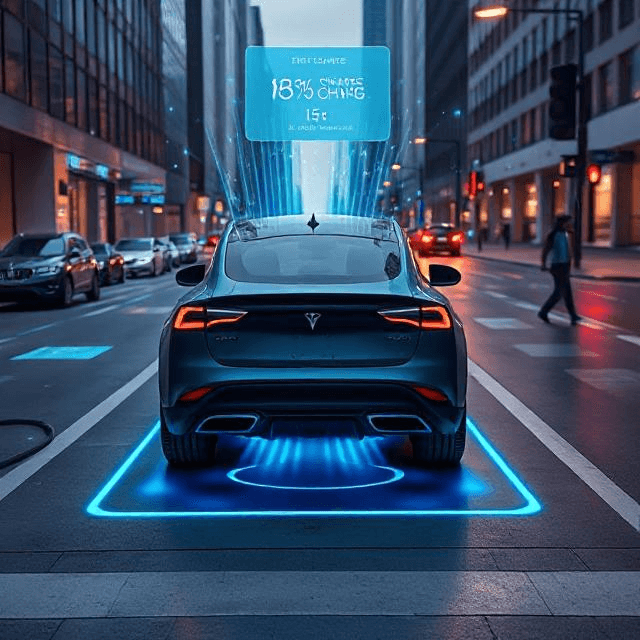Introduction: A New Era in EV Charging
As electric vehicles (EVs) become mainstream, a groundbreaking innovation is emerging—wireless EV charging. Imagine pulling into a parking space and having your car charge automatically, with no cables or plugs. This futuristic concept is now a reality, but is it truly the future of EV charging? Let’s dive into the technology, benefits, challenges, and the potential of going completely cable-free.
How Does Wireless EV Charging Work?
Wireless EV charging, also known as inductive charging, uses electromagnetic fields to transfer energy between a charging pad on the ground and a receiver on the vehicle. This technology operates similarly to wireless smartphone chargers but on a much larger scale.
Key Components:
- Charging Pad: Installed on the ground, connected to a power source.
- Receiver Coil: Mounted on the underside of the EV.
- Electromagnetic Field: Transfers power wirelessly via resonance.
Benefits
Convenience and Ease of Use
- No need to plug in cables—just park and charge.
- Reduces wear and tear on charging ports and connectors.
Enhanced Safety and Durability
- Eliminates tripping hazards from loose cables.
- Functions in all weather conditions, protecting from rain, snow, and extreme temperatures.
Smart and Autonomous Integration
- Ideal for autonomous EVs that require self-charging capabilities.
- Can be embedded into roads, allowing for dynamic wireless charging while driving.
Current Wireless EV Charging Projects and Leaders
Automakers and Tech Companies Driving Innovation
- BMW & Wireless Charging Systems – BMW’s 530e plug-in hybrid supports wireless charging pads.
- WiTricity & Qualcomm Halo – Advancing inductive charging for future EVs.
- Electreon & Dynamic Road Charging – Developing roads that wirelessly charge vehicles as they move.
Challenges and Limitations
High Initial Costs
- Wireless charging infrastructure is expensive to install and maintain.
Efficiency and Energy Loss
- Wireless systems are currently less efficient than direct plug-in charging.
- Energy loss during transmission can lead to higher electricity consumption.
Compatibility and Standardization
- Different automakers use varied technologies, making universal compatibility a challenge.
- Regulatory approval and safety concerns must be addressed for large-scale adoption.
The Future of Wireless EV Charging
Despite challenges, advancements in efficiency, affordability, and smart city integration make wireless EV charging a promising solution. Countries like Germany, Sweden, and the U.S. are testing inductive roadways that could one day allow seamless, on-the-go EV charging.





























